Behind the scenes at the Landbank: Every project comes with its own complexities
The Hamilton County Landbank, a managed entity of The Port, works to put properties back to productive use. From long-vacant lots and crumbling buildings to empty storefronts, the Landbank team takes on Hamilton County’s most challenging properties.
The expertise, resources, and partners needed vary depending on each project’s unique needs, and the Landbank team brings a wealth of capacities and expertise to unlock properties that have held communities back, in some cases for decades. Much of this work takes place behind the scenes. By the time you see that long-vacant, structurally unsound home demolished on your street, the Landbank and its partners have already been hard at work for months or years.
The complexity of a Landbank project requires a broad range of expertise, resources, and partners – and the Landbank can play different roles depending on each unique property and the compliance associated with diverse funding sources. Demolition, stabilization, new home construction, and more are all very central to what is happening within our Landbank.
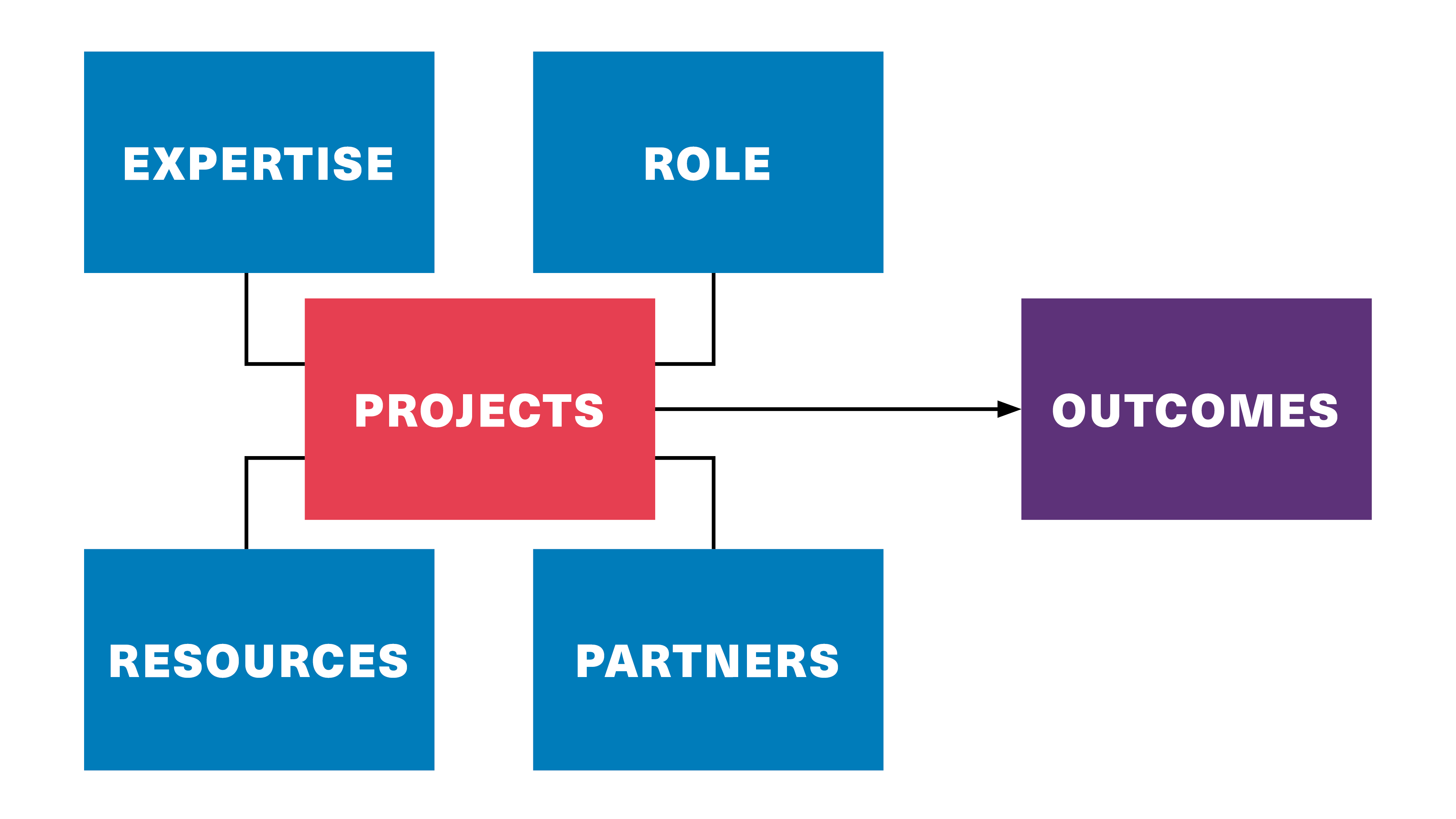
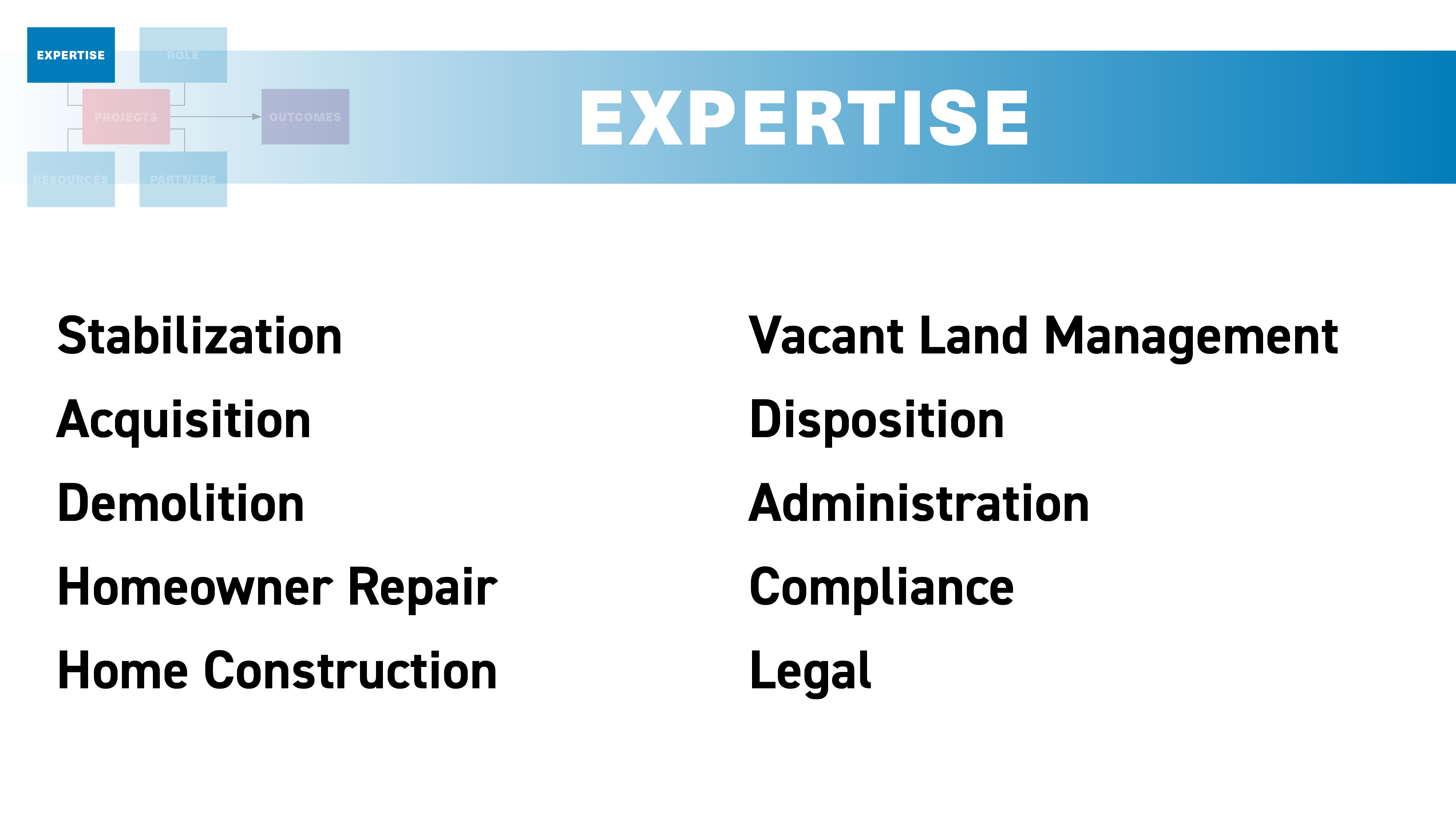

The Landbank team has real estate expertise across the board from property acquisition and stabilization to construction and home repair to legal and administration.
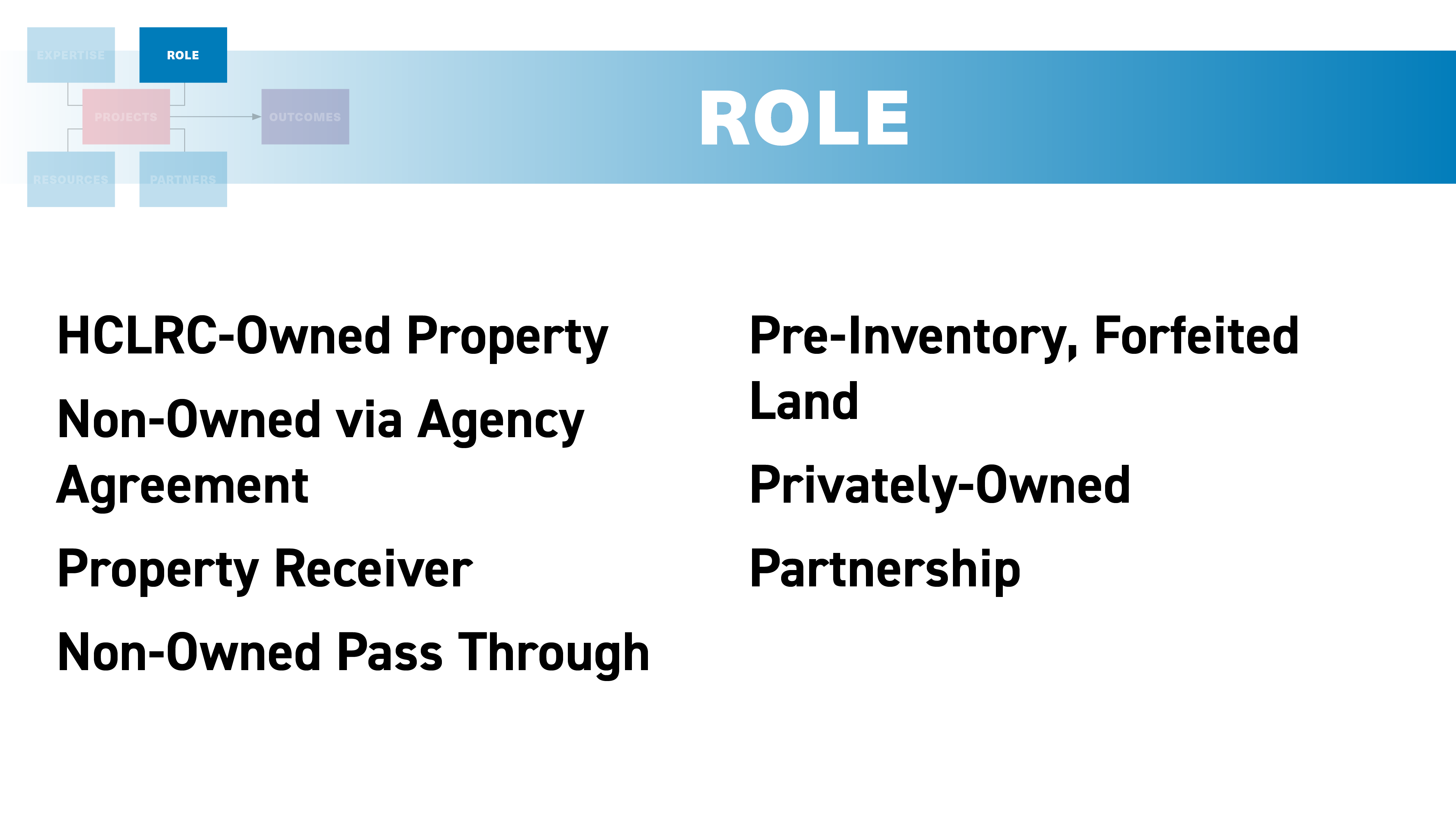

In addition to the expertise its team has, the Landbank is playing multiple roles on a property-by-property basis.
- Sometimes we own the property,
- Sometimes we are involved via an agency agreement – we don’t own the property, but the property owner is absent, and a city or county partner asks us to step in for critical actions like stabilization;
- Sometimes we’re acting as a receiver on behalf of a municipality to be responsible for a property that is involved in bankruptcy or foreclosure;
- Sometimes we are researching properties in pre-inventory, for example because an individual has expressed interest in donating property to the Landbank;
- And often we are working in partnership with a community group.
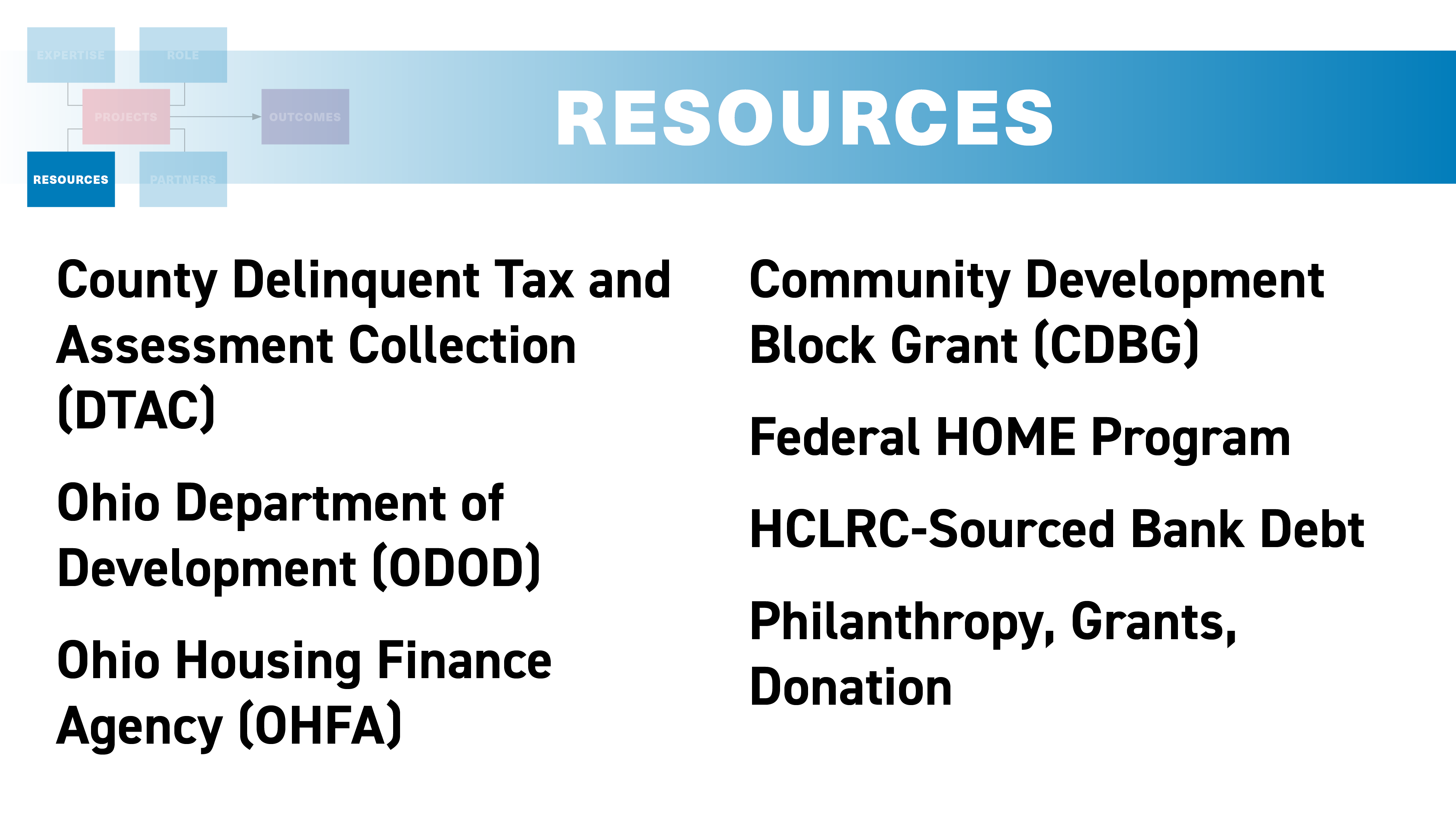

Additionally, there is a wealth of funding sources that the Landbank utilizes to stabilize, demolish, cleanup and rehab property in its care.
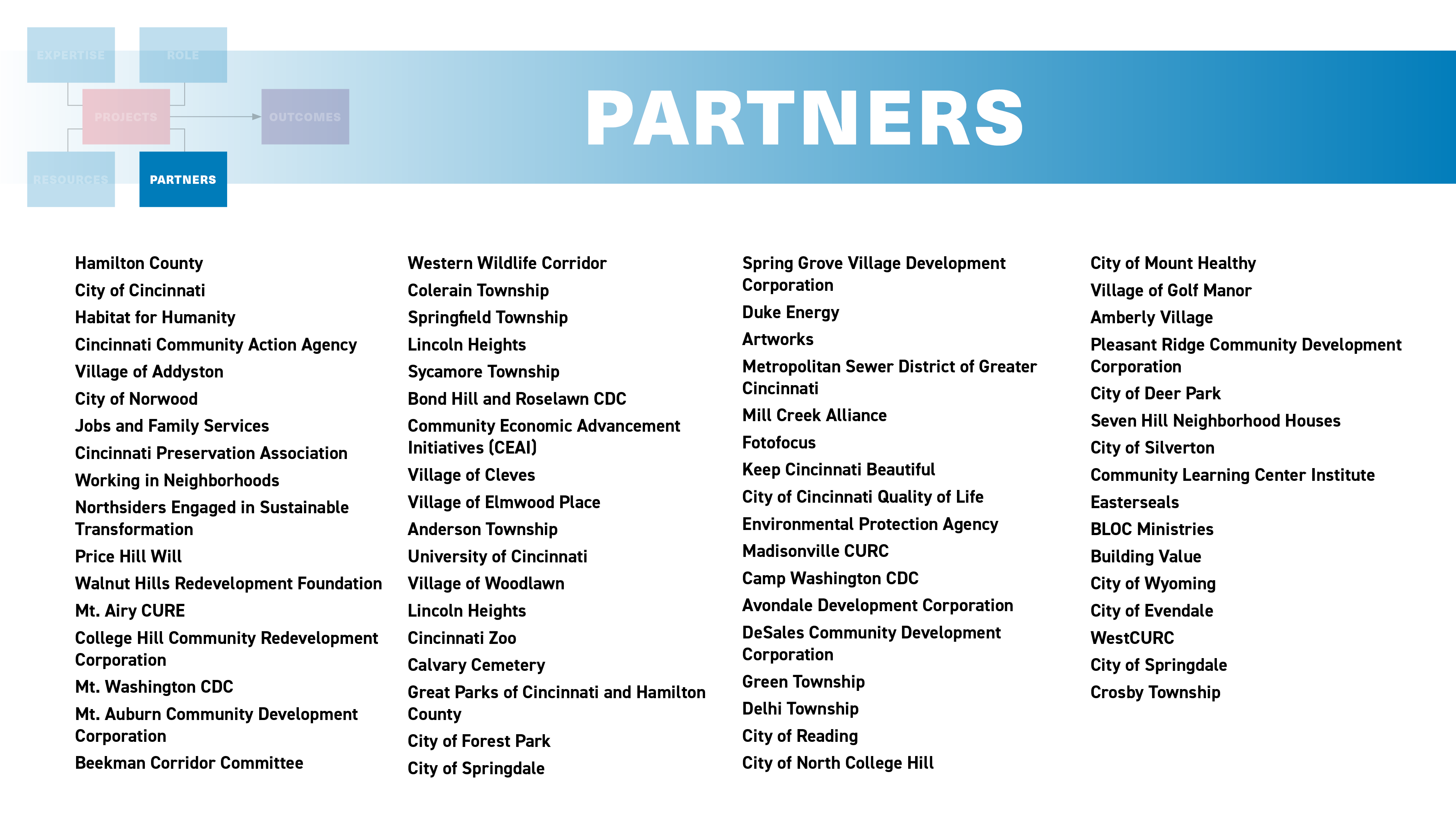

And, finally, the Landbank works with a wealth of community partners throughout Cincinnati and Hamilton County. This list is always growing!
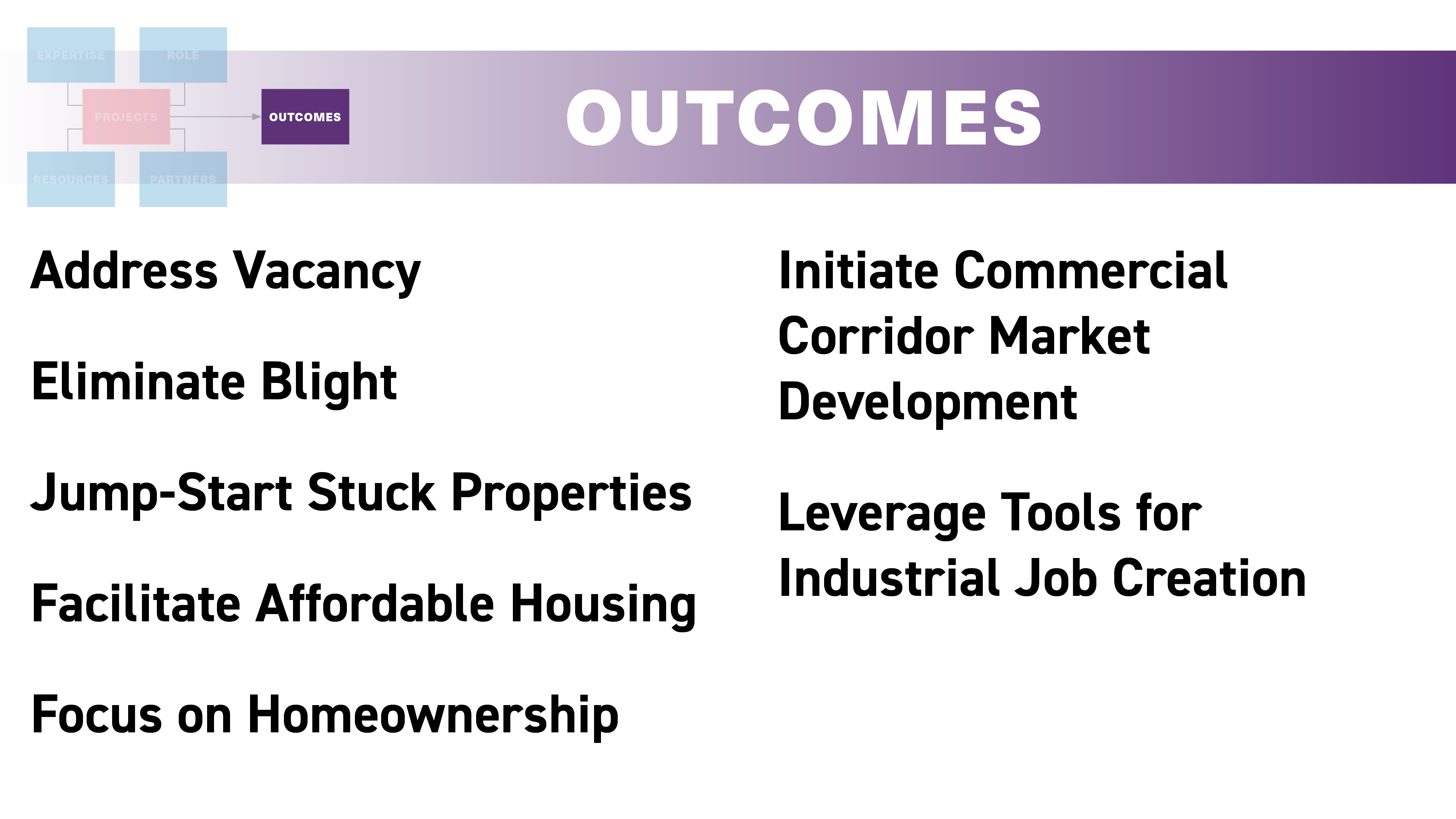

With all of these varying roles, needs, partners, and funding sources, what aligns all of our projects are the outcomes – blight elimination, jump-starting properties, making markets, and leveraging tools for job creation.
Every time we talk about a project, our role, the funding, the partners, are different. So what can this look like?
Example One: Demolition of a nuisance home in Delhi Township
The Landbank owns this property which has been vacant and abandoned for a long time. The community has issued a number of code violations on the property and it has deteriorated beyond saving. Below is the process for getting this single property demolished.
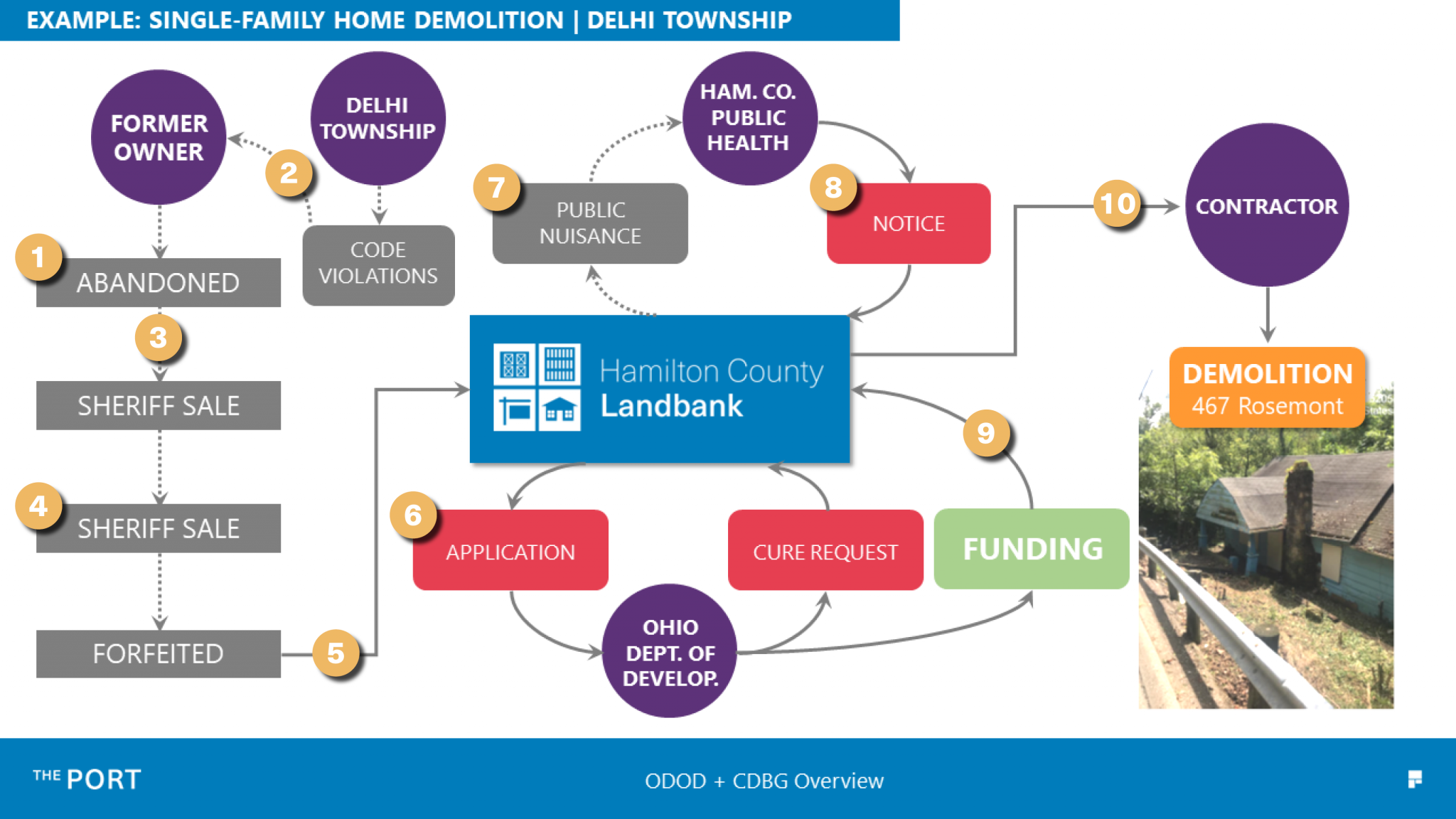

- The property owner abandoned the property.
- The Township assessed code violations.
- The property went through the foreclosure process.
- The property went through two sheriff sales – public auctions during which time the public could acquire the property.
- After it was not purchased at auction, it landed on a forfeited land list, and the Landbank acquired it.
- The Landbank then applied to the Ohio Department of Development (ODOD) for demolition funding, but to secure funding, it first needed to be declared a public nuisance.
- The Landbank reached out to the Hamilton County Health Department to formally declare the property a public nuisance.
- The Landbank received notice from the Department of Health and completed a cure request to ODOD.
- The Landbank received demolition funding from ODOD.
- The Landbank contracted for the demolition of this structure.
All of this for one $40,000 project
Example Two: Beekman Silos
The Beekman Silos loom over Beekman Street in Millvale. The site of a grain elevator and silos previously owned by the Consolidated Grain & Barge Company, the property has been vacant for decades, and a previous owner attempted to demolish the silos in 2008. However, the demolition efforts were abandoned, which caused significant damage to the remaining part of the structure. In its current condition, the structure presents a fire and safety hazard to the community and has been slated for demolition. Demolition of the silos on the property will yield a nearly two-acre site with proximity to downtown. The site is currently zoned Manufacturing General, allowing various commercial and industrial uses.
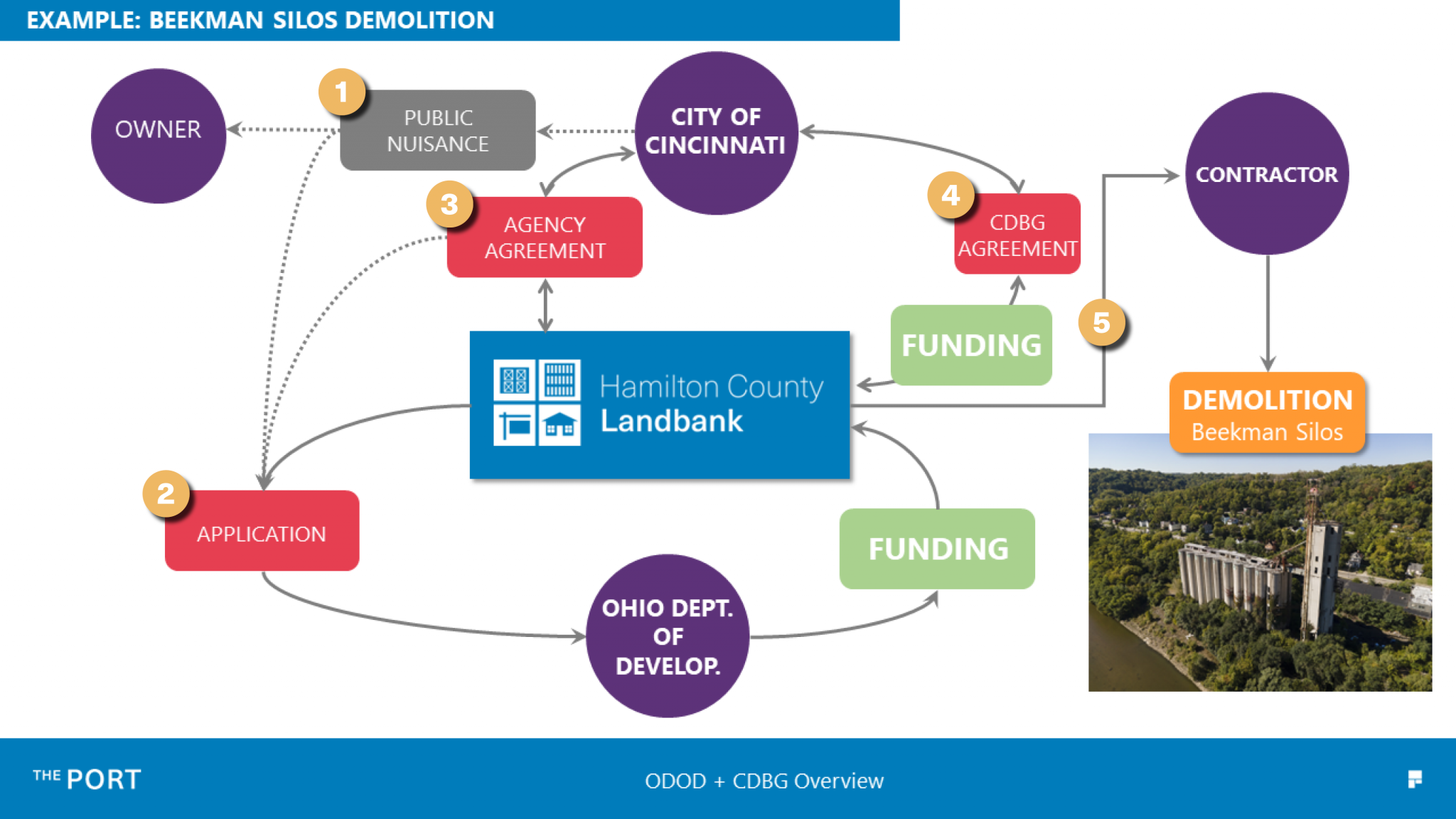

The City of Cincinnati declared the property a public nuisance, and the property was abandoned by the former owner.
- The Landbank submitted an application to ODOD for demolition funding.
- For the funding application, the Landbank needed to have an agency agreement in place with the city because the Landbank does not own the property.
- Additionally, the Landbank established a separate CDBG (Community Development Block Grant) funding agreement with the City of Cincinnati, matching funding necessary to ensure the ODOD could be utilized.
- The combined funding sources allow the Landbank to then contract for the demolition of the remaining structures. This process is underway.
Funding is often multi-faceted and comes with its own requirements and nuances
The Landbank and The Port were fortunate to secure millions in funding from the Ohio Department of Development (ODOD) to unlock properties throughout Hamilton County. However, one of the big complexities with ODOD demolition funding is the 25% matching funds requirement. In the case of the Beekman Silos, the City of Cincinnati CDBG funds filled that requirement. In other cases, it was funding from the private sector or other municipalities, so lots of different funding sources needed to be identified even before applying for ODOD funds.
One of the challenges the Landbank faces right now is it has identified sources of subsidy, like the American Rescue Plan Act (ARPA) for new home construction projects, but that funding only covers a portion of the required subsidy, or the difference between the cost of construction and the lower cost of sale to ensure homes remain affordable. Additional financing needs to be secured to fund the remaining subsidy necessary as well as construction financing to build the property.
Another layer of complexity is variability in how funds are dispersed. Some are dispersed in advance of the project, some require a reimbursement request after the work is completed. And in some cases, a third party is completing the work and the Landbank is distributing payment. So it’s a little bit of a ballet managing the flow of cash on hand for all of these projects underway simultaneously. As part of our focus on utilization of M/W/SBE contractors, we are particularly focused on quick payment/reimbursement for smaller businesses, often we are paying our contractors much more quickly than we are getting reimbursed.
The Landbank and its team are working every day on some of our region's toughest projects, and tackling those projects requires the Landbank to take on many roles, drawing upon a wealth of areas of expertise. It also takes a team of partners and a variety of resources, all working toward the shared outcomes of blight removal, commercial corridor market development, industrial job creation, and facilitating affordable housing.



In a future Behind the Scenes at the Landbank, we’ll take a closer look at two of the funding sources being used for the Beekman Silos demolition, funding from ODOD and City of Cincinnati CDBG funds.